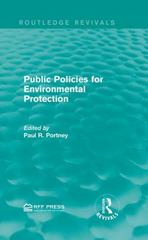please answer
Question 9 Not yet answered Marked out of 1.00 P Flag question The workers' compensation system in Canada's provinces and territories is funded by Select one: a. employers only b. employers and employees jointly c employers and general taxes. d. the Ministry of Labour. Question 10 Not yet answered Marked out of 1,00 P Flag question What does it mean for courts to take a contextual approach to termination with just cause? Select one: a. The nature and seriousness of an alleged offence by an employee is considered in the context of the overall employment relationship. b. Circumstances in the employee's life outside of work can be taken into account if there is evidence they had an effect on the employee's work life. c. Only the facts and circumstances related directly to the employee's alleged offence are considered relevant. d. none of the above Which of the following is NOT one of the "Meredith principles"? Select one: a, Employers pay the cost of workers compensation collectively through premiums paid into a central fund. b. The injury must have been sustained during the course of employment. c. The level of compensation a worker can receive is based upon how much their own actions contributed to the accident, d. The system is administered by an independent government agency Question 7 Not yet answered Marked oun of 1:40, p Flag question Wrongful dismissal is a claim that Select one: a. an employee was terminated without just cause. b, an employee was terminated for a characteristic related to a human rights ground. c an employee was terminated without receiving the requisite notice period or pay in lieu. d. during the course of dismissal, an employer acted in a manner that was inappropriate. Dishonesty can provide just cause for dismissal when Select one: a. it undermines the crucial element of trust in the employment relationship. b, it violates an essential condition of the employment contract. c, it is fundamentally and directly inconsistent with an employee's obligation to the employer. d. it does all of the above. Question 12 Not yet answered Marked out at 1.00 P Flag question The purpose of common law and statutory notice of termination or pay in lieu of notice is Select one: a. to provide the employee with time to find a comparable job while still receiving income. b. to recognize the employee's loss of benefits and seniority in the job. c. to punish the employer for wrongfully dismissing the employee. d. to do all of the above The term no fault insurance in regard to workers compensation legislation means that Select one: a. the employee cannot sue the employer for a serious injury that occurs while the employee is doing their job. b, the employee can sue the employer but only for very serious injuries that occur while the employee is doing their job. c. the employer cannot sue the employee for a workplace accident unless the employee was negligent. d, the employee cannot sue the employer for a workplace accident unless the employer was negligent. Question 20 Not yet answered Marked out of 1:00 - Flag question The "internal responsibility system" is BEST described as Select one: a. the allocation of responsibility for occupational health and safety to both the employer and employee, often via joint health and safety committees. b. the theory that employers are motivated to reduce accidents without legislation because accidents hurt their bottom line. c. the theory that employees assume all responsibility for workplace accidents as long as they are sufficiently notified of the risks beforehand, d. the system for investigating workplace accidents that is managed by the government agency responsible for administering occupational health and safety statutes







